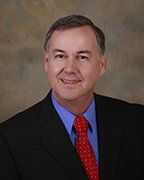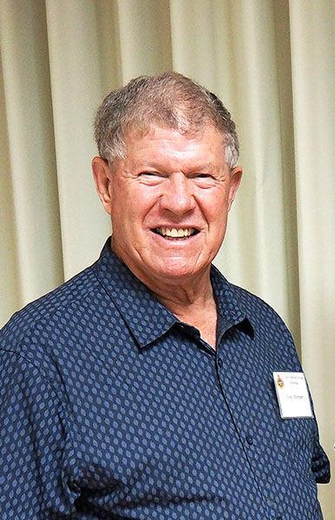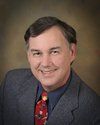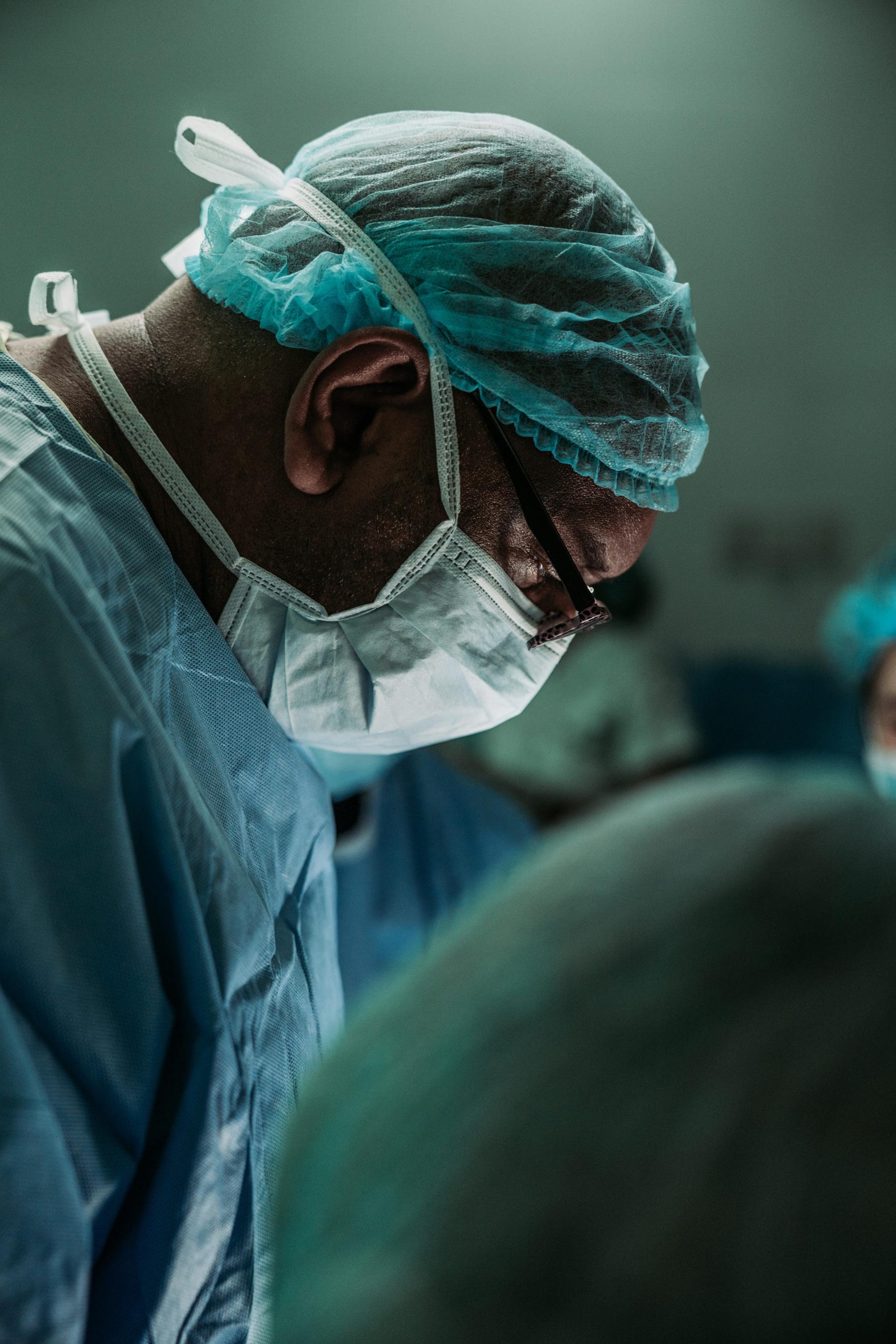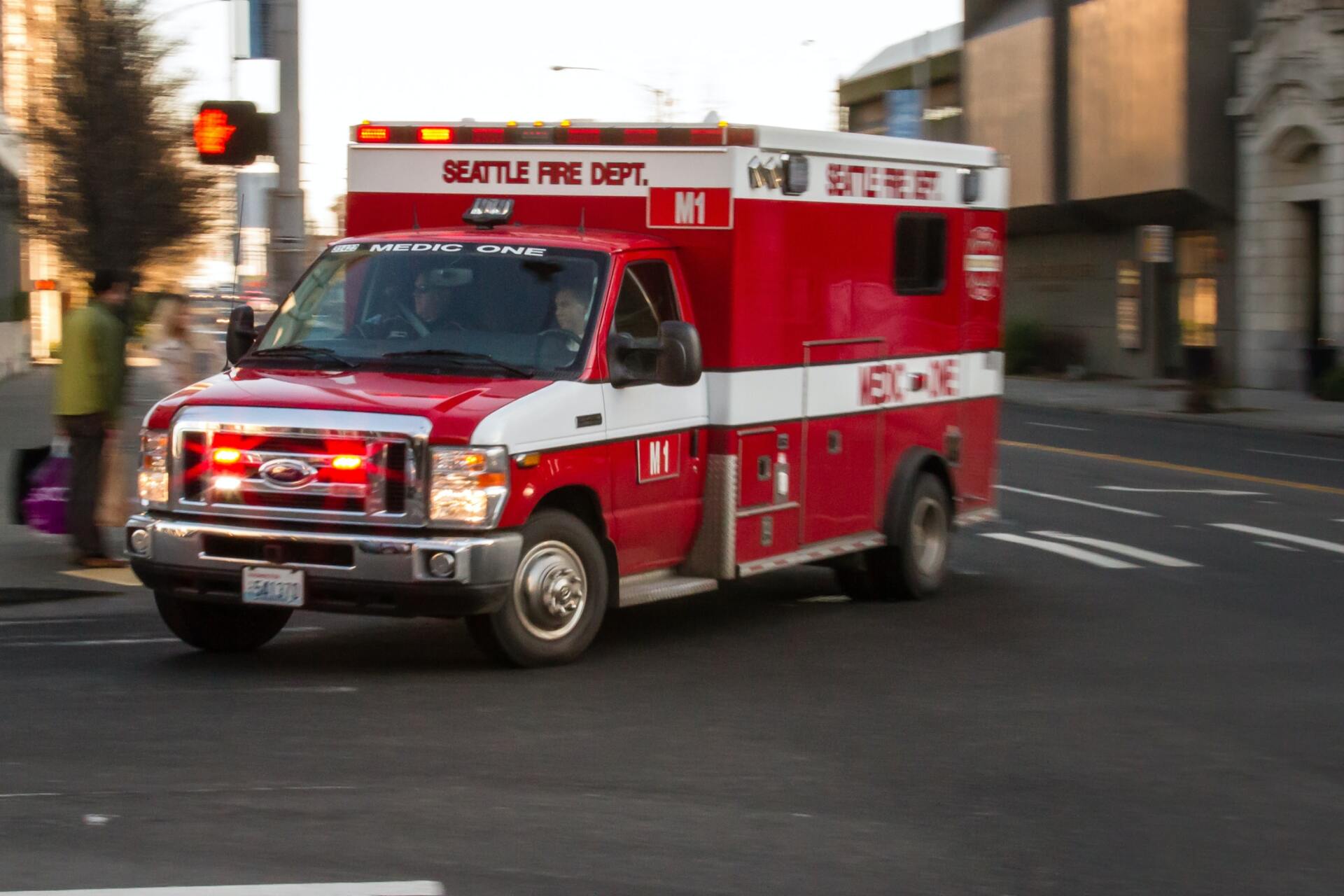About Our Slogan
HRO is a way of thinking and a set of attitudes. When we live in a High Reliability manner it does not matter where we are, whether at play, pursuing a hobby, or working. I have noticed that people who teach and profess HRO do not necessarily follow the principles outside of their specific job at work. We are an example of "those kind of people."
"I know that is what they told you, but let me tell you what we really do." Comforting words when I first began working in the ambulance because now I would know what to do in real time, in real life. As my experience grew I begin to learn a wide spectrum of practical things that people could not put into words clearly or street knowledge from people who did not have the education or opportunity to write it down. But this phrase also came from people who made shortcuts, acted on ignorance, or worked in self-interest.
When I began teaching in the PICU I wanted to help students, residents, respiratory care practitioners (RCP), and nurses by teaching them what we really do. I wanted teaching in a way that would overcome the "I know what they told you…" comments from the wrong people.
I also came to recognize that some of my students did not want to be there, did not want to learn, and did not believe this information would be of any use to them. This is in a unit where one or two children died each week. I basically had 10 minutes to catch their attention, teach it to them, and show its usefulness. (Sometimes I stood under the television set in the patient's room while lecturing. When I saw too many eyes looking above me I would end the lecture and move on.)
Jim Holbrook, my education guru or go-to-guy, was discussing Bloom’s Domains of Knowledge with me and we focused on the Affective Domain. This, he told me, is the knowledge of "How this will help me." I decided to focus here.
This seemed limiting at first but I found that people would fill in the space between my how-this-will-help bits of knowledge. Fairly quickly, they began telling me how it worked and I used this feedback to grow my lectures. This feedback comes the same day of my lecture, next day, and even 20-25 years later.
This also helped me avoid the problem of "buy-in." When I introduced a new concept managers would tell me I would have to obtain buy-in from the staff. I asked them, "Why do I need buy-in to provide good care?" Instead, I use the Affective Domain of Knowledge to teach what will help.
"What I teach today must explain yesterday or be used tomorrow," became my teaching philosophy. Some have called it my 72-hour rule. I build on recent events or experiences the students have had, finding the greatest opportunity in everyday life such as hobbies, cooking, car maintenance and driving, normal human behavior, and dating. I would prepare them for events they are likely to encounter but from the point of view of a novice facing an uncertain situation without support. These are the practical problems that experts gloss over because they seem too simple, yet in the confusion of a new event these simple problems block all further action.
“What I teach today must explain yesterday or be used tomorrow.”
RAdm Mercer initiated the studies of High Reliability when he invited academicians from the University of California, Berkeley, to study his crew
with the goal of improving their performance. At the time (July 1983-March 1986) he was Captain of the USS Carl Vinson (CVN 70). Rather than offer methods to improve, the academicians codified RAdm Mercer’s command philosophy and methods as a High Reliability Organization (HRO). He flew 255 Vietnam Combat Missions, has 970 carrier arrested landings, and has 3,700 hours in the A-4C and A-7E. His awards include the Defense Distinguished Medal, Distinguished Service Medal (two awards), Defense Superior Service Medal, Legion of Merit (two awards), Distinguished Flying Cross (three awards), four individual Air Medals, 25 Strike Flight Air Medals, and six Navy Commendation Medals.
RAdm Mercer was commander of Subic Bay Navy Base when Mt. Pinatubo threatened Clark Air Base. Evacuees from Clark came to Subic but on the day of the eruption a typhoon hit Subic endangering people from both bases who were then evacuated on US Navy ships. RAdm Mercer directed this activity while also assisting the Philippine people and government.
He had three combat deployments to Vietnam (USS Franklin D. Roosevelt, CVA 42, and USS Kitty Hawk, CVA 63), served as Executive Officer/Commanding Officer of VA-82 on the USS Nimitz (CVN 68), and had command of the USS Guadalcanal (LPH 7) and USS Carl Vinson (CVN 70). As a Flag Officer, he first served on the Joint Chiefs of Staff as Vice Director for command and control, interoperability, and operational planning (J6/J7). He then became Commander of Carrier Group Seven (Nimitz, Midway, and Ranger Battle Groups) followed by Naval Forces Philippines. He retired from the US Navy after serving as Superintendent, Naval Postgraduate School, Monterey, CA. He was also Executive Director of the Center for Risk Mitigation at the University of California, Berkeley.
RAdm Mercer graduated with distinction from the US Naval Academy and received his Master of Science Degree in Aeronautical Engineering from the Naval Postgraduate School, Monterey, CA. He also graduated from the Navy’s nuclear propulsion school.
ABOUT ME, DAVE
Walking through the emergency department (ED) at the end of my second year of medical school I saw a trauma resuscitation going on. Because of my experience working on the Rescue Ambulance for the Los Angeles Fire Department (LAFD) I was interested in how it was done in the hospital. What I saw, I simply could not understand. We would have been disciplined had we acted on the streets like what I saw. Yet, here they were not only acting in that manner, they were proud of it and happily criticizing others after the resuscitation ended.
I did not know at that time the problems my Rescue Ambulance past would cause me. I was one of the first career fire paramedics to enter medical school. Witnessing these behaviors started my pursuit to understand the science that made the beliefs and behaviors of 1970s ambulance men and firefighters correct, what made the beliefs and behaviors of certain physicians wrong, and what was it that made them believe they were right.
When I became a physician in the Pediatric Intensive Care Unit (PICU) I had a chance to apply my mountaineering and LAFD Rescue Ambulance experiences to medical care and teaching. Ron Perkin, M.D., a former U.S. Navy aviator with aerial combat experience from the Vietnam War, and I used our experiences to create a new PICU. Within three years we were the second largest PICU in the state and had the second largest pediatric critical care transport program. We also had half the expected mortality for a unit of our size and for an academic center. We used this approach in in our regional EMS program and an investigative reporter spent three months looking for problems in our pediatric EMS program. He found none.
These results gained the notice of Karlene Roberts, PhD, from the University of California, Berkeley, who told me that we were performing in a manner she called High Reliability and that we had created a High Reliability Organization (HRO). This started our collaboration with the Berkeley group of HRO academics [http://ccrm.berkeley.edu] and our series of HRO articles. To share this information and our experience I started the series of International HRO Conferences and the website www.High-Reliability.Org.
Early on I was taught that people are our best assets, particularly when a problem must be solved immediately because of high risk. This philosophy worked well in the PICU and we could see change in the performance of the PICU staff, or any of the programs where I worked, within months. The interventions are generally straightforward and we worked from middle management downward to the line worker. As Dr. Roberts pointed out, the executives and organization must allow this to happen.
I started this blog to focus on what the individual can do. My experiences, and what I learned from other practitioners, will be my guide here. What I write has been used by me or taught to me by people I work with.
Please read this material and see what you can use immediately. Tell me what works or if you had a problem with it. Let us continue the discussion of how HRO is a normal behavior we can implement immediately.
Contact me through this website or by email vanstralen@stratrel.com
About My Bona Fides
I am a pediatrician with fellowship training in Pediatric Critical Care. As a pediatrician I used these methods to help develop a PICU, critical care transport program, Emergency Medical Care bachelor's degree program for paramedics, nurses, and Respiratory Care Practitioners, two pediatric chronic intensive care facilities, and several EMS programs. Currently I am the medical director for REMSA, the Riverside EMS Agency (Riverside County, California) and an Assistant Professor of Pediatrics, Loma Linda University School of Medicine. My publications are listed in the reference section of this blog.
My academic background includes two bachelor’s degrees from the University of California, Irvine, My degrees are in Social Ecology and Biological Science. I was a chemistry major for a while at California State University, Long Beach. My medical degree (1984) is from the University of California, Irvine, where I also did my pediatric residency. My Pediatric Critical Care Fellowship was in Dallas at the Children's Medical Center and Parkland Memorial Hospital.
My ambulance work started in 1972 for a private ambulance company while I worked my way through Cerritos Community College. In 1974 the opportunity came to work as a Rescue Ambulance (RA) Driver for the LAFD which I took as I was having problems affording college. Most of my time was spent assigned to Fire Station 66 in South Los Angeles during the period when the street gangs Crips and Pirus (later called the Bloods) were moving into the area and an Angel Dust epidemic came through. This is where I not only learned what is now called HRO it is where I practiced it and learned refinements I have used later.
On the RA we worked with two men assigned to the RA unit and responded alone. A fire company or the police responded only when we made the request from the scene. There is one exception, if the caller used the word “gun” or said it was a shooting we waited for law enforcement, otherwise we responded alone to all crimes of violence including stabbings. This gave me experience forming a team on the run while treating a patient and keeping everyone safe.
My station commander at FS 66, William J. Corr, counseled me to consider medical school. He was my model and mentor for how I would later practice medical care in emergencies and the basis for what is HRO in my use.
While working with the LAFD I took my paramedic training at the Paramedic Training Institute of the University of Southern California under Ronald Stewart, MD. Dr. Stewart was an early pioneer in teaching paramedics using high level concepts such as use of the measures of cardiac output (how much the heart pumps each minute) to understand medical emergencies and guide treatment. He also focused on supporting the paramedics as a means to improve care. He encouraged me to apply to medical school and it is his philosophy of medical care, how to treat patients, and how to work with paramedics that I continue to use today.
The men who taught me during this period were combat veterans from World War II, the Korean Conflict, and the Vietnam War and they were also veterans of major fires, crime scenes, and the Watts Riots. The Central Receiving Hospital ambulance men had been transferred to the LAFD to create the Rescue Ambulance. These men worked in the Central Receiving Hospital Emergency Department with doctors and nurses, and responded to the field where they worked closely with LAPD. They had a wealth of information of both emergency medical care and law enforcement activity.
My mountaineering experience has become a part of my daily life both as belief and metaphor. I began climbing in high school in the Sierra Nevada Mountains both winter and summer and saw my first death in the mountains before I graduated from high school. It was at this death that I began to wonder about decision-making under stress. I have since made solo climbs in winter and have trekked in the Himalaya including an attempt to ascend Mt. Pharchomo in the Rolwaling Himal where I made a solo descent to high camp after developing pulmonary edema below the 20,000 ft. summit.
About the Science I Use
Dr. Jules Crane, Professor of Zoology, Cerritos Community College, Norwalk, CA, taught that science is a self-correcting body of knowledge and, wherever possible, we should both use the most basic science we can and learn as much about a topic as we can. While not perfect, I will do my best to correct my knowledge quickly, stick to the basic sciences, and stay as broad as I can.
There are many theories in the field of HRO, safety, and reliability so I must use some kind of guideline to identify theories for this blog. The theory must explain how an 18-year-old can function in a manner consistent with HRO and must also be easily understood by the novice. Whenever possible I would like to see more than one researcher using a theory (this does not include colleagues and students of the theory’s creator). I like to stay as close as possible to the basic sciences and use concepts, definitions, and principles from the basic sciences. The perfect example of this is the concept of culture that, in HRO, safety, business, and education, strays mightily from the definition and usage of sociologists and anthropologists.
As much as possible I like to combine multiple fields of science such as physics and neuroanatomy or chemistry and psychology. If a concept is true in more than one field of science it is more reliable to me for use in this blog.
I hope this will make the blog useful to people from novice to expert and keep the blog from becoming a battleground of theories. After all, what you read here must explain yesterday or be used tomorrow and not change at the whim of a new theory. Lives depend upon it.
Random Things You May Not Know About Me
(but may help you understand some postings)
1. I was one of first career fire paramedics to attend medical school, worked as ambulance man 1972-77, medical school 1980-84.
2. I went around the world … twice.
3. I trekked and climbed in the Himalaya 9Mt. Pharchomo).
4. I taught cooking Mexican food to a restaurant in Kathmandu (Heerendra, owner of Helena's Restaurant).
5. I started the first clinical academic Bachelor’s Degree program for paramedics in the US (School of Allied Health Professions, Loma Linda University) .
6. I knew Tom Wheeldon who lived in Forge Cottage, UK.
7. I fell down a mountain couloir, in snow, very fast.
8. I had pulmonary edema at high altitude (Mt.Pharchomo at 20,000 ft.).
9. I sailed on a felucca down the Nile River, developed dysentery, hospitalized in Amsterdam with reactive arthritis from the dysentery, and started medical school in a wheel chair weighing 125 pounds (I am 6 ft. tall).
My Articles
The Battle of Gettysburg and Wildland Firefighting: Organizational response to a dangerous environment, through the lens of High Reliability Organizing. van Stralen D. (2010). US Wildland Fire Lessons Learned Center publication, September 2010 pp. 1-8.Gettysburg Staff Ride
A Case of the Birth and Death of a High Reliability Healthcare Organization. Roberts KH, Madsen P, Desai V, Van Stralen D. Quality Safety in Health Care 2005; 14(3): 216-220. Birth and Death, HRO
Changing a Pediatric Sub-acute Facility to Increase Safety and Reliability. van Stralen D, Calderon RM, Lewis JF, Roberts KH (2008), Grant T. Eric W. Ford, and (ed.) Patient Safety and Health Care Management, (Advances in Health Care Management, Volume 7), Emerald Group Publishing Limited, pp. 259-282. Changing a Peds Subcute
Current Medical Staff Governance and Physician Sensemaking: A Formula for Resistance to High Reliability. Flitter MA, Riesenmy KR, van Stralen D. (2012), Leonard H. Friedman, Grant T. Savage, Jim Goes, in (ed.) Annual Review of Health Care Management: Strategy and Policy Perspectives on Reforming Health Systems (Advances in Health Care Management, Volume 13), Emerald Group Publishing Limited, pp. 3 – 28. Physician sensemaking
The Dark Side: Appeasing or confronting? van Stralen D, Perkin RM. Critical Care Medicine 1994; 22(1): 179-180. The Darkside
Emergency Medical Decision-Making in the Tactical Environment. McConnell M, van Stralen D. The Tactical Edge. 1997 (Summer):32-39. Emergency medical decision-making
EMS & High-Reliability Organizing: Achieving safety & reliability in the dynamic, high-risk environment. van Stralen D, Mercer T. JEMS (The Journal of EMS) 2013;38 (6):60-63. JEMS HRO June 2013
A Win for HROs: Employing high-reliability organization characteristics in EMS. Heightman AJ. JEMS (The Journal of EMS) 2013;38(6):12-13. JEMS HRO Editorial, June 2013
The French Connection: France’s wildland fire service finds success through high-reliability concepts. van Stralen D, Provansal G. Wildland Firefighter 2007 (March):26-34 French Fire
High-Reliability Organizations: Changing the Culture of Care in Two Medical Units. van Stralen D. Design Issues 2008 (Winter);24(1):78-90. Design Issues PICU Subacute
Introduction: Design and organizational change. Buchanan R. Design Issues 2008 (Winter);24(1):2-9. Design Issues Introduction
The Origins of EMS and Military Medicine: How combat medicine influenced the advent of today's EMS model. van Stralen, D. Supplement: War on Trauma, JEMS (The Journal of EMS) 2008;32(10): 11-15. Military & EMS History
Patient Safety in a Freestanding Subacute Care Facility. van Stralen, D. 2003 (Feb) pp. 1-29. Requested paper for the Institute of Medicine Committee on “Work Environment of Nurses and Patient Safety.” Patient Safety, Subacute, IOM
Patient Safety Is an Organizational Systems Issue: Lessons from a variety of industries. Roberts, KH, Kuo, Y, van Stralen, D. (2012), Barbara J. Youngberg in (ed.) Patient Safety Handbook 2nd edition. Burlington, MA: Jones & Bartlett Learning, pp. 143-155. Patient Safety, other industries
Rehab & High Reliability Organizations. Heightman, A.J. JEMS (The Journal of EMS) 2006;33(5): 14-16.JEMS HRO 2006
Stress Reactions: Understand and accept their appearance. van Stralen, D, Perkin, RM. JEMS (The Journal of EMS) 1999;(March): 50-52. Stress Reactions

